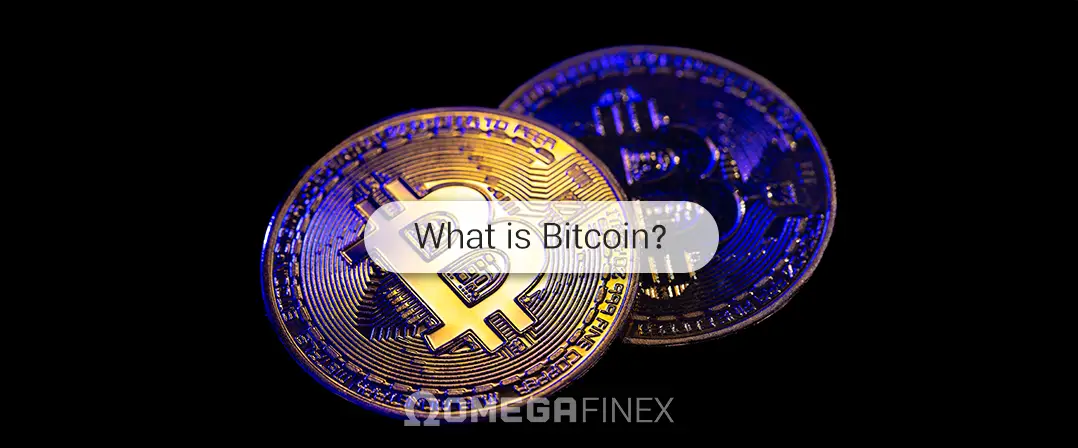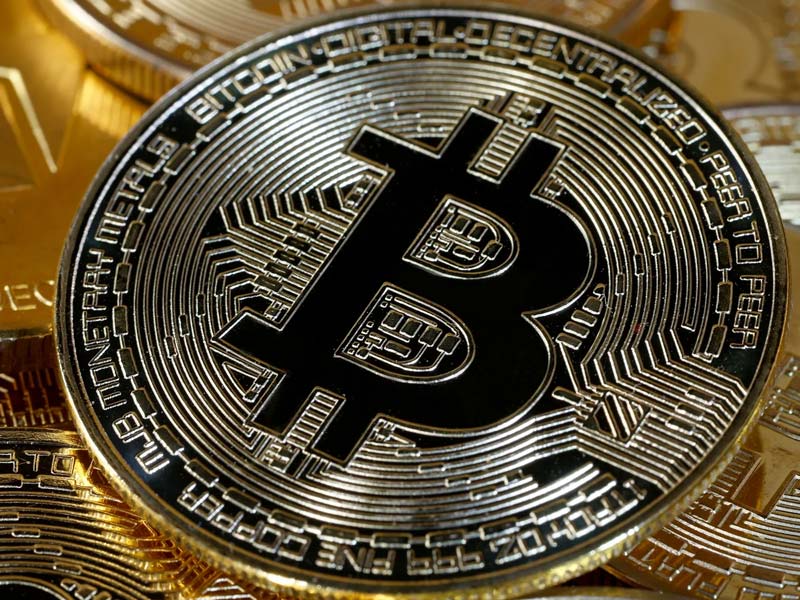
What is Bitcoin? 0 to 100 About Bitcoin
Bitcoin, often referred to as “digital gold,” is a decentralized cryptocurrency that has transformed the financial world since its inception. It was the first cryptocurrency ever launched, and its success has inspired the creation of thousands of other crypto assets. Bitcoin operates on blockchain technology, ensuring transparency, security, and immutability.
It was introduced in 2008 by an anonymous individual or group under the pseudonym Satoshi Nakamoto. Designed as a peer-to-peer payment system, Bitcoin allows users to transfer value directly without intermediaries like banks or governments.
In this article by OmegaFinex Broker, we will explore ‘what is Bitcoin’, how it works, its history, the technology behind it, and its impact on the global financial landscape.
A Brief History of Bitcoin
Bitcoin was first introduced in 2008 when Satoshi Nakamoto published a whitepaper titled “Bitcoin: A Peer-to-Peer Electronic Cash System.” The paper outlined a vision for a new kind of money that would operate entirely online, free from the control of centralized authorities like governments or banks.
The BTC network went live on January 3, 2009, when Nakamoto mined the first block, known as the *Genesis Block.* Embedded in this block was a message referencing the 2008 financial crisis: *”The Times 03/Jan/2009 Chancellor on brink of second bailout for banks.”* This message highlighted Nakamoto’s intent to create an alternative to traditional banking systems.
In its early years, Bitcoin was primarily used by a niche group of cryptography enthusiasts and early adopters. One of the first significant transactions occurred in 2010 when a developer bought two pizzas for 10,000 BTC, which today would be worth millions of dollars.
As more people recognized the value of BTC, its popularity surged. By 2017, BTC was widely accepted as a legitimate asset class, reaching an all-time high of $20,000. This milestone brought mainstream media attention, cementing Bitcoin’s position at the forefront of the financial world. Although its price has fluctuated significantly since then, BTC remains the most valuable and well-known cryptocurrency.
What is Bitcoin?
There are countless ways for Forex trading, including currency pairs, stock trading, metals, and indices. Another popular asset class is cryptocurrencies, with Bitcoin being the most famous. Available on various trading platforms such as MetaTrader 4 and MetaTrader 5, BTC operates as a crypto currency on a decentralized network called the blockchain.
Unlike traditional currencies controlled by central banks and governments, BTC is maintained by a distributed network of nodes (computers) that follow a consensus protocol. Here’s how it works:
Blockchain Technology: The blockchain is the core technology behind Bitcoin. It is a public, decentralized ledger that records every BTC transaction. The blockchain is made up of a chain of blocks, each containing transaction data. Once a block is added to the blockchain, it cannot be altered or tampered with, ensuring the network’s immutability and security.
Bitcoin transactions are grouped into blocks, which are added to the blockchain through a process called mining. Every node in the network holds a complete copy of the blockchain, ensuring that no single entity has control over the entire network.
Mining and Consensus Mechanism: BTC operates on a consensus mechanism called Proof of Work (PoW), where miners compete to solve complex mathematical problems. These problems validate transactions and add them to the blockchain. Miners use powerful computers to perform these calculations, and the first miner to solve the problem is rewarded with newly created Bitcoin. This process is known as mining.
Mining not only introduces new coins into circulation but also secures the blockchain by ensuring that only valid transactions are recorded. The difficulty of mining adjusts over time to ensure that new blocks are added approximately every 10 minutes.
Bitcoin Transactions: To send BTC, users need a wallet that stores their private and public keys. The private key is a secret code that gives users access to their coin, while the public key is used to receive coins from others. When someone wants to send BTC, they create a transaction and sign it with their private key to ensure its authenticity.
Transactions are then broadcast to the network, where miners verify them and add them to a new block. Once a transaction is included in the blockchain, it is considered final and cannot be reversed.
Bitcoin’s Limited Supply: One of BTC’s defining features is its limited supply. Only 21 million coins will ever exist. This scarcity has contributed to Bitcoin’s value as a store of wealth, similar to gold. Currently, over 18.8 million coins have been mined, leaving less than 3 million BTC to be circulated. This fixed supply makes BTC resistant to inflationary policies seen in fiat currencies, where central banks can print more money at will.
What is Bitcoin Advantage?
BTC has several unique features that set it apart and offer various advantages over traditional financial systems. Let’s explore what these advantages are:
- Decentralization: BTC is decentralized, meaning no single authority, such as a government or bank, controls it. This decentralization makes Bitcoin resistant to censorship, manipulation, and interference by any central entity. Users can send and receive BTC without needing approval from third parties, making it particularly valuable in regions with unstable financial systems.
- Transparency and Security: Every BTC transaction is recorded on a public blockchain, making it fully transparent. Anyone can view the transaction history, but users remain pseudonymous unless they publicly associate their wallet address with their identity.
BTC is also highly secure. The cryptographic algorithms securing the network are virtually impossible to hack, and the decentralized nature of the blockchain means there is no single point of failure. As a result, Bitcoin is often considered one of the safest ways to store and transfer value online. - Low Transaction Fees: Compared to traditional banking systems or payment processors like PayPal, BTC transactions typically come with lower fees, especially for international transfers. While fees can vary depending on network congestion, Bitcoin remains an affordable solution for moving large amounts of money across borders.
- Borderless and Inclusive: BTC operates on a global scale. Anyone with internet access can use Bitcoin regardless of their geographic location or local economic status. This inclusivity enables people in underbanked regions to participate in the global financial system.
- Inflation Resistance: BTC’s fixed supply ensures that it is deflationary, meaning its value is likely to increase over time as demand grows. In contrast, fiat currencies are inherently inflationary, as central banks can print more money at will, potentially reducing the value of the currency.
BTC Challenges
While BTC offers numerous advantages, it also faces significant challenges and criticisms. Let’s examine the key challenges BTC encounters:
- Scalability: As the number of BTC users grows, the network struggles with scalability. Block size is limited, and transaction verification can become slow and expensive during high demand. Solutions like the Lightning Network, which enables faster off-chain transactions, are being developed to address this issue.
- Energy Consumption: Bitcoin’s Proof of Work (PoW) consensus mechanism requires a substantial amount of energy to power the network. The environmental impact of BTC mining has become a major concern, with critics arguing that the network’s energy consumption is unsustainable. Efforts are underway to adopt more energy-efficient methods or encourage the use of renewable energy in mining operations.
- Regulation: BTC’s decentralized nature has drawn the attention of regulators worldwide. Governments have taken different approaches, with some embracing BTC as a legitimate asset class, while others seek to ban or restrict its use. As BTC continues to grow, clear regulatory frameworks will be essential for its long-term success.
- Volatility: BTC is known for its price volatility. While its value has increased significantly over the past decade, it has also experienced dramatic declines. This volatility makes Bitcoin a high-risk investment and may deter people from using it as a stable medium of exchange.
What is Bitcoin Future?
What is Bitcoin future? The answer remains uncertain, but its impact on the financial world is undeniable. Some view it as the currency of the future, a crypto alternative to gold that could become a global reserve currency. Others are more skeptical, citing its challenges and the potential rise of alternative cryptocurrencies or Central Bank crypto Currencies (CBDCs).
Regardless of differing opinions, BTC has already left its mark. It has showcased the power of decentralized technology, reshaped conversations around money, and opened the door to a new era of financial innovation.
Conclusion
In this Forex trading guide with OmegaFinex Broker, we explored “what is Bitcoin” and discussed how BTC is much more than just a cryptocurrency. It is a revolutionary technology with the potential to transform how we think about money and financial systems. With its decentralized nature, security, and limited supply, BTC offers a new way to store and transfer value in a rapidly changing world.
However, Bitcoin also faces significant challenges, including scalability issues, regulatory scrutiny, and environmental concerns.
As the world continues to evolve, BTC is likely to remain a key player in the financial landscape, whether as a store of value or a foundation for future blockchain innovations. It can always be a viable option for any trader’s portfolio, regardless of the minimum balance for Forex trading. Whether you are an investor, a technologist, or simply curious about the future of money, understanding BTC is essential for navigating the next wave of financial evolution.







